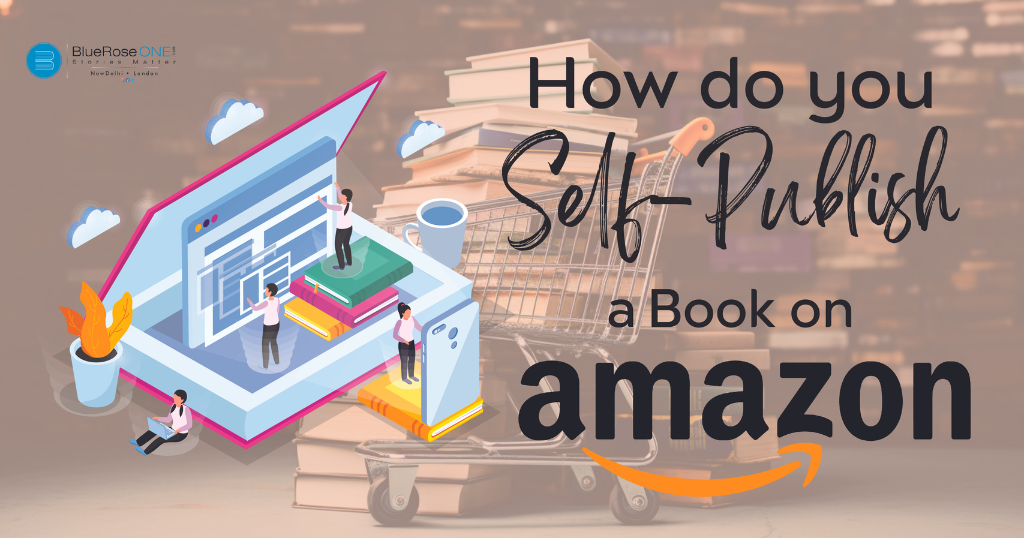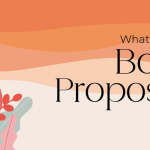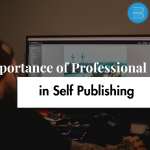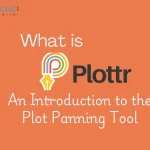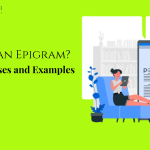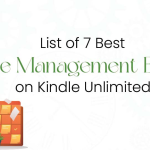In the ever-evolving landscape of the publishing industry, self-publishing has become a game-changer, providing authors with the opportunity to bring their literary creations directly to readers. Amazon, with its Kindle Direct Publishing (KDP) platform, has played a pivotal role in democratising publishing. This comprehensive guide is designed to be your go-to resource for navigating the ins and outs of self-publishing on Amazon.
Read: How can use ChatGPT & other AI systems to Assist you with Book Marketing.
Understanding the Basics of Self-Publishing :
- What is self-publishing on Amazon? Self-publishing is a revolutionary concept that empowers authors to bring their creative works directly to the audience without traditional publishing intermediaries. Unlike traditional publishing, where authors rely on literary agents and publishing houses, self-publishing allows writers to maintain control over their work throughout the entire publishing process. In this digital age, self-publishing has become a viable and accessible avenue for aspiring and established authors alike. One of the key players in the self-publishing landscape is Amazon, and its Kindle Direct Publishing (KDP) platform has been a game-changer. Amazon KDP provides a user-friendly interface that enables authors to publish and distribute their books globally in both digital and print formats. This democratisation of publishing has opened doors for diverse voices and niche genres that might not have thrived in the traditional publishing model.
- The Rise of Amazon KDP in the Digital Publishing Era The digital publishing era marked a paradigm shift in the way books are produced, distributed, and consumed. Amazon, already a giant in e-commerce, recognised the potential of the digital book market and launched Kindle Direct Publishing. KDP streamlined the self-publishing process, allowing authors to publish their books as e-books for Kindle devices and apps, reaching a massive global audience. Amazon KDP’s rise has coincided with the surge in e-reader and tablet usage, making digital books more accessible than ever. Authors no longer need to navigate the traditional publishing gatekeepers; they can upload their manuscripts, design their covers, and set their pricing, giving them unprecedented control over their publishing journey. Amazon’s extensive reach and established customer base further propelled KDP into the forefront of the self-publishing revolution.
- Choosing Amazon for Self-Publishing Authors choosing Amazon for self-publishing benefit from the platform’s unparalleled global reach. Amazon has a massive customer base and a well-established infrastructure for book distribution. This means that authors can potentially reach readers in various corners of the world, exposing their work to a diverse and extensive audience. The Kindle Direct Publishing platform offers a straightforward and efficient publishing process. Authors retain creative control and can publish their works in multiple formats, including e-books and print-on-demand paperbacks. The accessibility and ease of use make Amazon a preferred choice for many authors venturing into self-publishing, creating a democratized publishing landscape where literary success is not solely determined by traditional gatekeepers but by the readers themselves.
You may also like: The Rise of Self-Publishing and What it Means for Authors
The Self-Publishing Process
- Creating Your Amazon KDP Account Setting up your KDP (Kindle Direct Publishing) account is the crucial first step in bringing your book to a global audience. Navigate to the KDP website and click on “Sign up” if you don’t have an account. Follow the step-by-step process to enter your personal and banking information. Once your account is set up, you gain access to the KDP dashboard.
- Navigating the KDP Dashboard The KDP dashboard is your command centre, providing a comprehensive overview of your book’s performance and sales. It displays critical information like sales trends, royalties earned, and customer reviews. Familiarise yourself with the various sections, such as Reports, Kindle eBook Preview, and Promote Your Book, to efficiently manage and track your book’s progress.
- Uploading Your Manuscript and Cover Use Kindle Create, Amazon’s formatting tool, to ensure your manuscript appears seamless on Kindle devices. Follow the guidelines for formatting, which include considerations for fonts, images, and overall layout. A professionally formatted book enhances the reading experience. Design an eye-catching book cover that reflects the essence of your work. Amazon provides cover templates, or you can hire a graphic designer for a customised touch. Upload both your formatted manuscript and cover through the KDP platform.
- Setting Rights, Pricing, and Distribution Understanding copyright is crucial. Ensure you have the rights to publish the content. Decide on pricing strategies for your e-book and print-on-demand versions. Consider factors like book length, genre, and market competition. Opt for global distribution to reach readers worldwide. Choose between Amazon’s various distribution channels, including Kindle stores and expanded distribution.
- Categories, Keywords, and Metadata Optimisation Leverage categories and keywords strategically to enhance your book’s discoverability. Choose categories relevant to your genre and use keywords that potential readers are likely to search for. Optimise your book’s metadata, including the title, subtitle, and book description. A well-crafted description and accurate metadata improve your book’s visibility in search results and category rankings.
- Enrolling in KDP Select Evaluate the pros and cons of exclusive distribution through KDP Select. Enrolling in KDP Select means your e-book is exclusive to Amazon. While this limits distribution to other platforms, it offers advantages like inclusion in Kindle Unlimited and the Kindle Owners’ Lending Library. Assess whether the benefits align with your publishing goals and target audience.
- Maximising Benefits Through KDP Select If you decide to enrol in KDP Select, make the most of its benefits. Promote your book during free promotions or Kindle Countdown Deals. Take advantage of Amazon’s promotional tools, such as Kindle Book Review and Kindle Daily Deal, to boost visibility. Keep track of your book’s performance and adjust your marketing strategy accordingly. By comprehensively understanding and implementing each step in the self-publishing process on Amazon, you position your book for success in a competitive market. From the initial setup to strategic marketing decisions, mastering the intricacies of KDP empowers you to reach a global audience and achieve your publishing goals.
You may also like: The Importance of Professional Editing in Self-Publishing
Refining Your Book Details for Self-Publishing
- Book Previews and Quality Checks Previewing your book on different devices is a critical step in ensuring a seamless reading experience for your audience. Amazon’s Kindle platform supports various devices, including Kindle e-readers, Fire tablets, and Kindle apps for smartphones and computers. Utilize the Kindle Previewer tool provided by Amazon to simulate how your book will appear on different devices. This allows you to identify and address any formatting issues specific to certain platforms, ensuring consistency and readability across the Kindle ecosystem. Addressing common formatting issues is essential for a polished final product. As you preview your book, pay attention to aspects such as font size, spacing, and image placement. Kindle formatting can sometimes present challenges, and addressing these issues proactively will enhance the professionalism of your work. Common problems include improper paragraph indentation, inconsistent font styles, or images that may not display correctly on all devices. Regularly check for these issues during the writing and formatting process to streamline the final quality check. Quality checks play a pivotal role in creating a positive reader experience. Take the time to proofread your manuscript thoroughly, checking for grammatical errors, typos, and formatting inconsistencies. Enlist the help of beta readers or professional editors to provide valuable feedback. A polished and error-free book not only enhances your credibility as an author but also ensures reader satisfaction.
- Understanding Royalties and Payments Exploring royalty options for Kindle and print is crucial for authors seeking to monetize their work effectively. Amazon offers different royalty structures for Kindle e-books and print-on-demand paperbacks. Kindle Direct Publishing (KDP) provides two primary royalty options: the 35% royalty rate and the 70% royalty rate. The latter is available for books priced within specific ranges and entails a delivery fee based on file size for e-books. For print-on-demand paperbacks, royalty rates vary based on factors like book size, page count, and printing costs. Authors can set their list prices and choose between two royalty options: 60% or 40%, depending on factors such as distribution channels and printing costs. Understanding these options empowers authors to make informed decisions aligned with their pricing and profit goals. Tracking sales and payments through KDP reports is a key aspect of managing your author business. Amazon provides comprehensive reports through the KDP dashboard, offering insights into your book’s performance, sales trends, and royalties earned. Regularly review these reports to assess the effectiveness of your marketing strategies, understand reader preferences, and identify opportunities for improvement. Timely and accurate reporting ensures authors stay informed about their financial transactions and can make data-driven decisions to optimise their publishing endeavours.
You may also like: How to Make Book Design More Appealing to the Reader
FAQs and Troubleshooting
- How Much Does It Cost to Publish a Book on Amazon?
Breaking down costs for self-publishing on Amazon involves considering various factors to ensure a polished and professional final product. Cover design is a crucial investment, as a visually appealing cover attracts potential readers. Authors can hire professional designers or explore cost-effective options like pre-designed templates. Editing is another essential expense; hiring a professional editor ensures that your book is free of grammatical errors and maintains a high standard of writing. Additional costs may include formatting services, ISBN acquisition, and marketing materials. Budgeting wisely for these aspects is essential for a successful self-publishing journey. - Budgeting Tips for Self-Publishing Authors
Effective budgeting is paramount for self-published authors aiming to maximise their investment. Prioritise spending on professional editing and cover design, as these significantly impact your book’s marketability. Consider utilising self-publishing platforms that offer free or affordable tools for formatting and cover creation. Explore cost-effective marketing strategies, such as leveraging social media, building an author website, and participating in book promotions. It’s crucial to strike a balance between necessary expenses and cost-saving measures to ensure a well-rounded and budget-friendly publishing process. - Common Issues and Troubleshooting
Dealing with formatting challenges is a common hurdle in the self-publishing process. Authors should adhere to Amazon’s formatting guidelines, utilising tools like Kindle Create for seamless conversion. Regularly preview your book on different devices to identify and address formatting inconsistencies. If issues persist, seeking assistance from professional formatters may be necessary.
Revising book details and metadata is crucial for optimising your book’s discoverability. Ensure that your book title, description, and keywords accurately reflect its content. Regularly update metadata to align with evolving market trends and reader preferences. If you encounter challenges, revisiting and refining these details can enhance your book’s visibility and appeal. - Marketing Your Self-Published Book
Utilising Amazon Author Central is a powerful tool for authors to enhance their online presence. Create an engaging author profile, share your bio, and link your blog or website. Leverage Author Central’s features, such as the Author Page and Author Rank, to connect with readers and establish a strong author brand.
Implementing effective marketing strategies is crucial for promoting your self-published book. Leverage social media platforms to engage with your audience and build a community around your work. Explore book promotions, both paid and free, to increase visibility. Utilise email marketing to connect with your reader base and provide updates on new releases or promotions. Consider investing in targeted advertising campaigns to reach a wider audience. A well-rounded marketing approach, tailored to your book’s genre and target audience, enhances your book’s chances of success in a competitive market.
Read: What is Pathos in Literature: Definition, Examples, and their Impact on Literary World.
Embarking on the journey of self-publishing on Amazon can be a rewarding endeavour for authors. Armed with this comprehensive guide, you are equipped with the knowledge and tools needed to navigate the self-publishing process successfully. Embrace the opportunity to share your stories with the world through the vast platform that Amazon KDP provides. Happy publishing!

